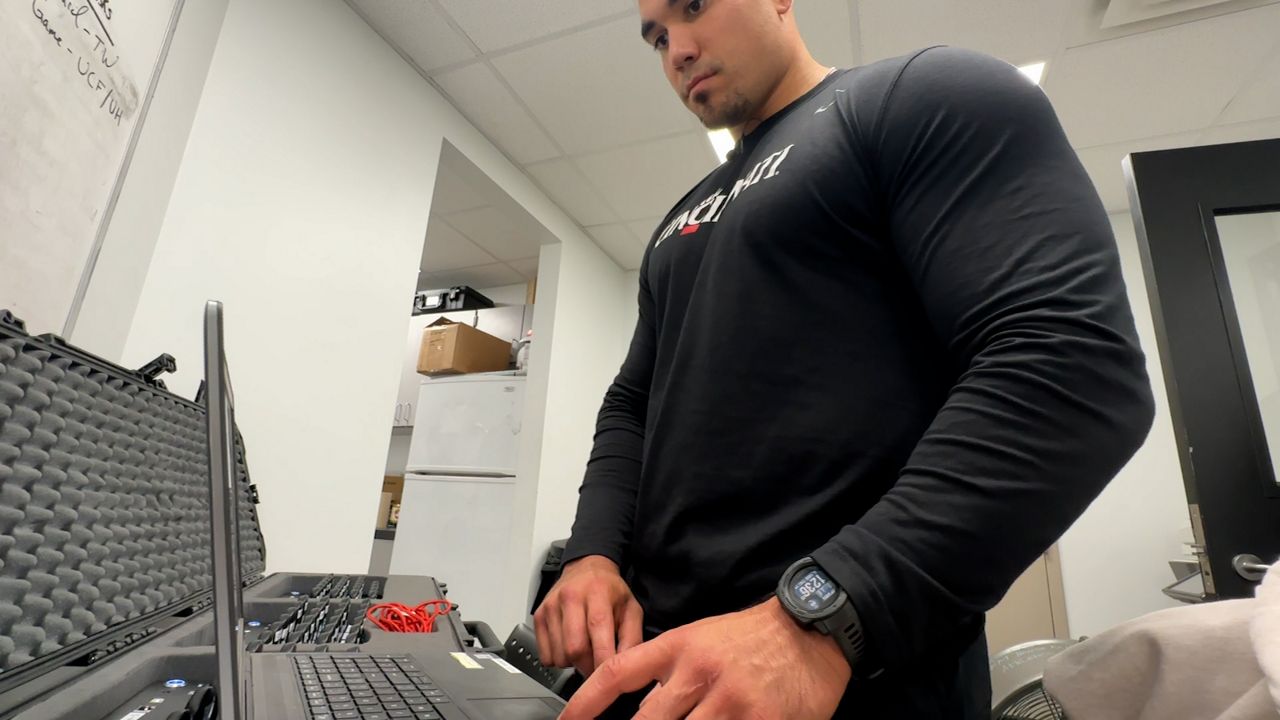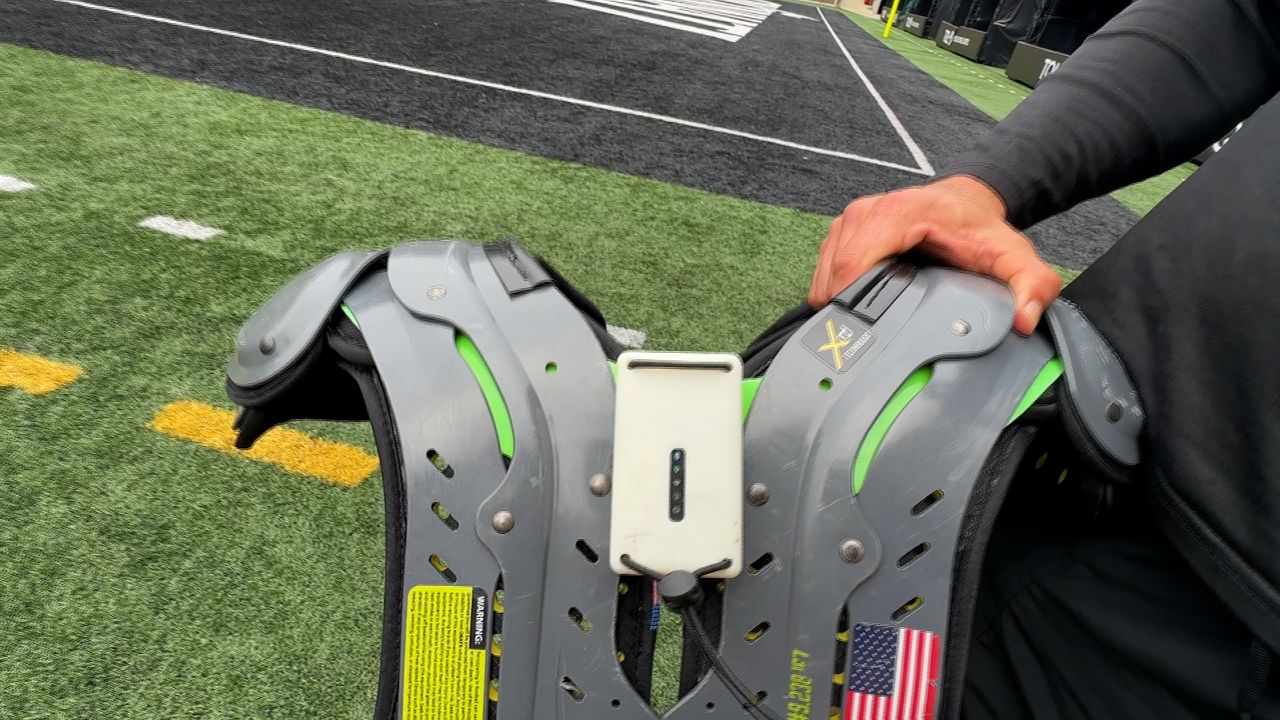CINCINNATI—Training on the football field can be grueling, but also a guessing game for trainers and coaches. Which is why many football teams now use wearable devices to monitor data like distance and velocity on each player. At the University of Cincinnati, the football team has been using that technology for several seasons, but this year thanks to the university’s digital fabrication lab, they have even more accurate data on game day.
What You Need To Know
- The University of Cincinnati football team uses wearable technology to track data for each player
- The team used the device during practice but struggled to find a way to wear them during a game without getting inconsistent data or breaking the devices
- UC's Digital Fabrication Lab stepped in and created 12 prototypes for a case for the device before finding the best option
- Now, players can wear these devices and coaches can accurately depict the data throughout each game
From the seats of Nippert Stadium, you may never know what goes into every play and practice.
“All these little red dots, all these red lines are efforts," Brandon Garcia the assistant strength and performance coach at UC explained.

There’s a lot of science behind the physicality of the sport. For Garcia, it’s a part of the job.
“Post practice when we’re done collecting them, we’ll just put them all in here and then I’ll come in here and break it all down," Garcia said.

These small pieces of technology are Catapults. They measure pretty much every statistic you may want to know about a football player during a game or practice.
“What about when they go play 10 plays, how much distance is covered? No one knows, it’s kind of a guessing game," Garcia said. "So with Catapult, you kind of take all the guesswork out. You know exactly how much distance they covered at what velocities, how much change of directions they had.”

But the team had a problem — how can players wear this comfortably under their pads during a game? Thankfully the engineers at UC’s Digital Fabrication Lab across campus were able to help.
It took Sam Antoline, the director of the University of Cincinnati's Digital Fabrication Lab, and his students 12 prototypes to get the case for the Catapult just right.

They had to think of many different factors; the most important being the snugness of the device to keep the data accurate and the protection of the device so it could withstand hit after hit. But after 12 tries, they were able to get it. Antoline says the collaboration speaks volumes about this project.
“Incredibly important," Antoline said. "And it’s something that the digital fabrication lab has done throughout its entire history. This was, if I recall correctly, the first collaboration with UC Athletics.”
So now back on the football field, it’s in action, staying put and gathering the data the strength coaches need.

“They don’t have to think about this thing poking me in the back," Garcia said. "They can just go play football.”



